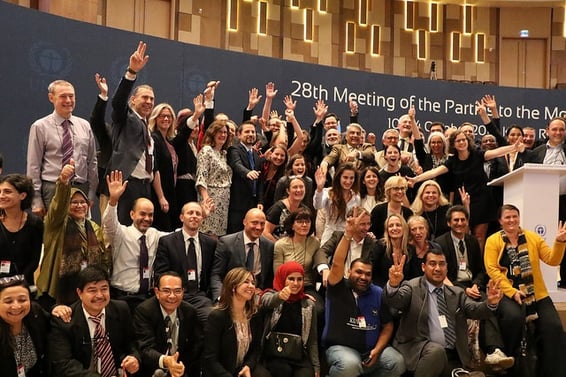You may have been reading over the last few weeks regarding the amendment to the Montreal Protocol and the environmental benefits this has for the earth moving forward.
We have definitely been tuned to staying abreast of the news that has come out of Rwanda and how the market has been reacting. Here at Heuch, we believe that the reduction in use of the hydroflurocarbons (HFC) gases was inevitable. Especially considering that they can be 10,000 times more powerful than carbon dioxide as greenhouse gases.
So what is the Motreal Protocol all about?
During the 70's scientists observed a thinning of the Earth's ozone layer above Antarctica which increase the UV radiation levels. Primarily affecting South Australia and New Zealand. They concluded that the depletion in the ozone layer was due to a range of ozone depleting chemical which included chloroflurocarbons (CFC) refrigerants. So in 1987 the Montreal Protocol came to fruition to reduce and eventually phase out the use of any CFCs. As a result, the ozone layer is slowing mending itself.
So good news all round... or so we thought...
Unfortunately, the replacement to CFCs were Hyrdochloroflurocarbons (HCFCs). Whilst HCFCs have a significant lower ozone depleting potential, they do unfortunately produce greenhouse pollutants. The most well-known HCFC is R22 refrigerant (which you can read about further here), and has become (in a sense) the face of the Montreal Protocol for phase out. All HCFC usage is scheduled to end in 2040.

And now, as of October 15th, nearly 200 nations came together again to further phase out the HFCs. Photo credit: Rwanda Environment Management Authority REMA's photostream.
"This amendment to the Montreal Protocol is the single most important measure the global community can take to limit global warming in the short term," Andrew Light, distinguished senior fellow at the World Resources Institute, said.
So what does that mean for me?
There has been a lot of discussions around the industry moving towards natural refrigerants over synthetic refrigerants and this can be a great step forward. Supermarkets are already well into adopting the use of c02 for their refrigerants. We are currently working on a project for world industry leader Thermo-Fisher, using natural refrigerant for cold warehouse storage of pharmaceutical products and FMCGs.
With respect to the Montreal Protocol and the phase out of HFCs, it is a good time to be looking at your current refrigerants being utilised, and work out what is the best option for your facility moving forward.
If you are looking at increasing the capacity of your facility moving forward in the coming years, that is a great time to look in to non-synthetic refrigerants.
Not sure what to do?
Simply contact us for a chat and we will be happy to work out the best solution for your facility.









